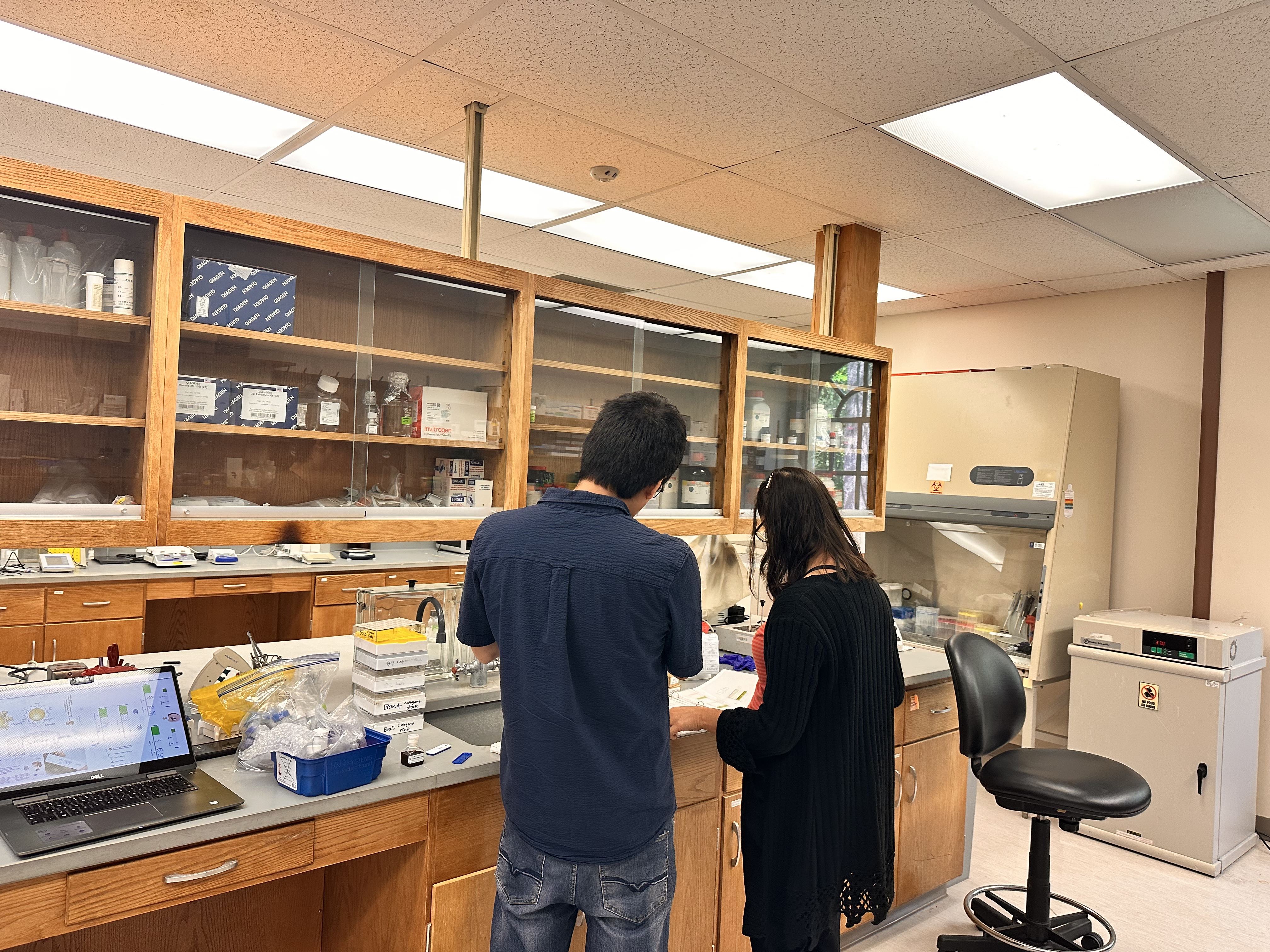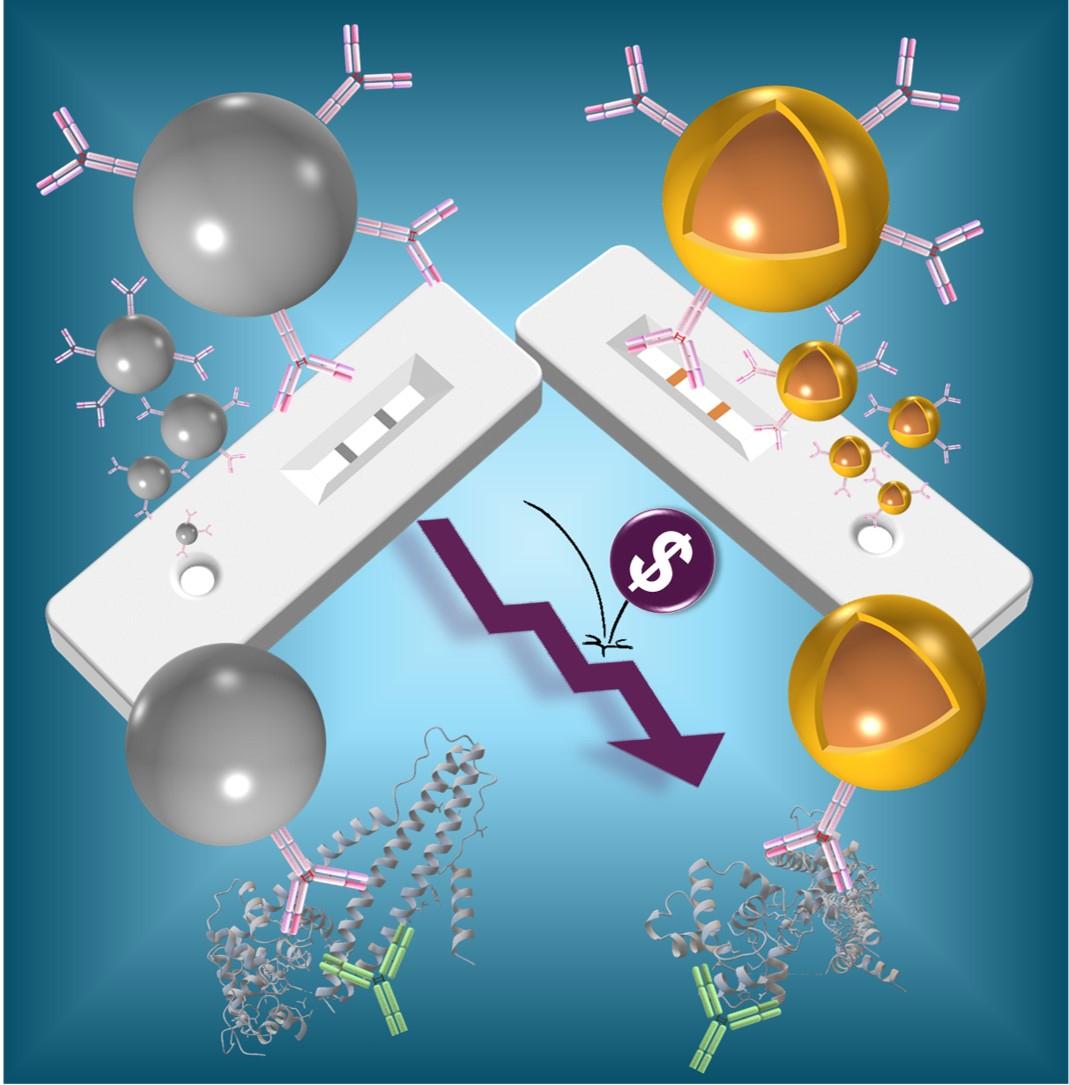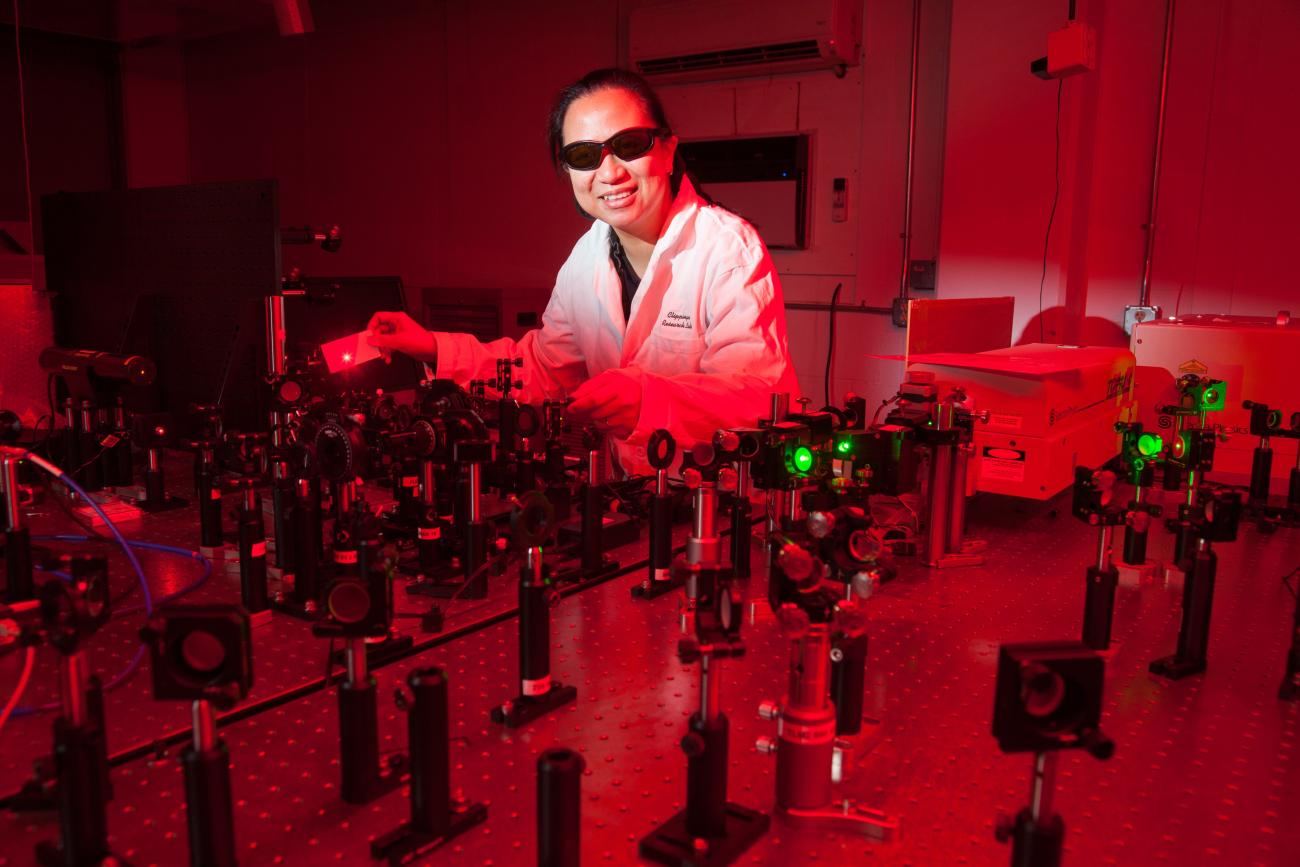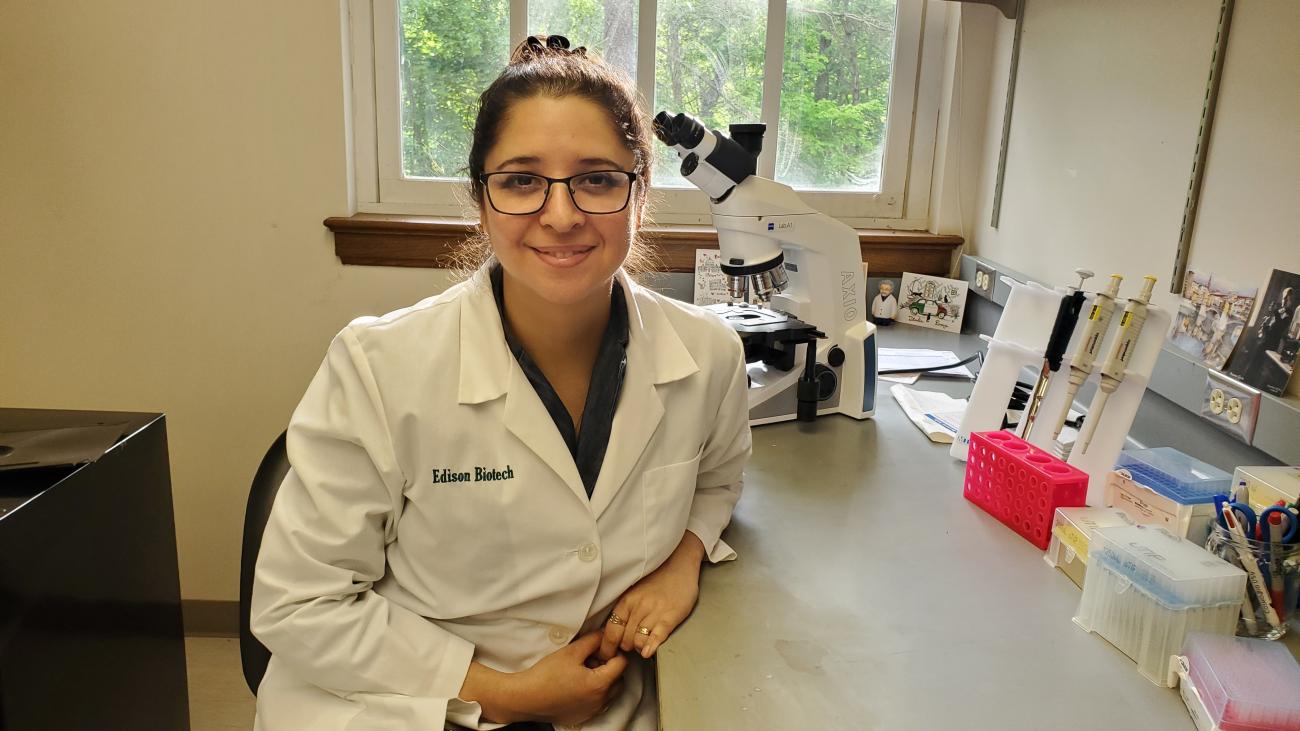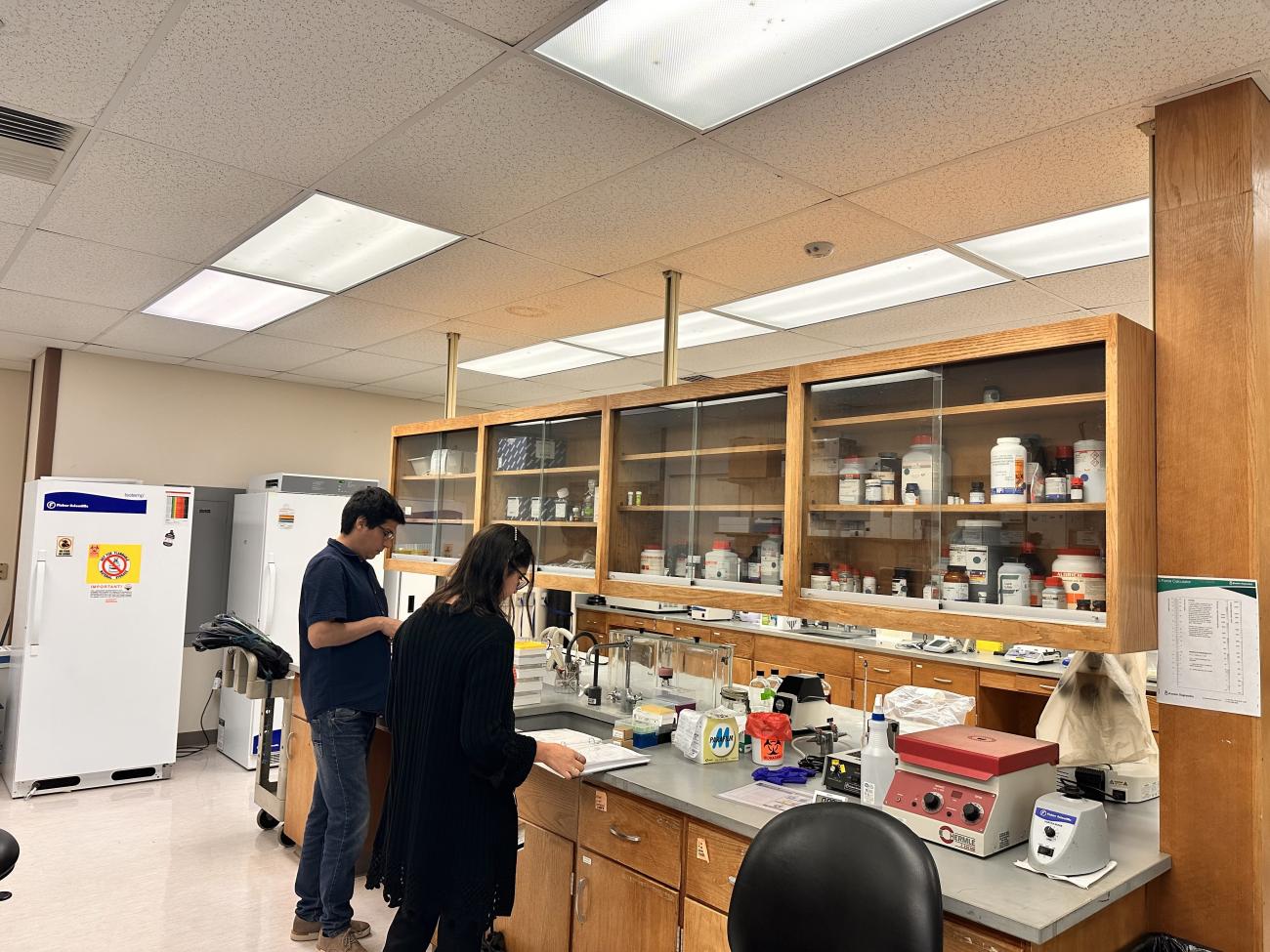Lateral flow assay test kit is a term most people might not recognize. Lateral flow testing technology has been around for decades, but only recently received widespread use and attention during the coronavirus pandemic in the form of COVID-19 tests.
A large part of what makes most lateral flow assay (LFA) tests function is gold. Colloidal gold nanoparticles have a red appearance and make up the red lines that indicate whether a test is positive or negative. The pandemic demonstrated the necessity of LFA technology, but tests aren’t always accessible due to cost and demand. Gold is one of the most expensive materials on earth and can increase the cost of manufacturing tests, but a team of Ohio University researchers proved cheaper components may be just as effective.
The OHIO team’s work consisted of using titanium nitride (TiN) and gold-covered copper (Cu@Au) nanoparticles as components in test kits for the first time. These nanoparticles are made with inexpensive materials and efficient technologies like laser ablation. The researchers showed that tests done with TiN and Cu@Au, worked for sensing two biomarker molecules: a labeling “toy” molecule called FITC, and more significantly cardiac troponin, a molecule that increases in the blood during a heart attack.
Ohio University Distinguished Professor of Physics Dr. Alexander Govorov designed and directed this research with support from other colleagues at OHIO. Most biotesting research during the pandemic focused on better methods to test for COVID, rather than potentially decreasing the cost of tests and making them more accessible.
“The pandemic was a crucial factor since LFA technology got pushed to its almost perfection,” said Govorov. “But costs are still not low, and different materials and technologies can lower the costs drastically.”
The main idea of LFA kits is to attach proteins and biomolecules to a nanoparticle’s surface. In this way, the nanoparticle acts as a vehicle. The attached biomolecules then recognize a desired molecule present in samples from our bodies. The molecule associated with a given disease or viral infection will then turn on the indicative test line on the kit.
“This was the working principle we endlessly used during the COVID-19 pandemic,” Govorov explained. “If both the test line and the control line of the kit turned on, we would be infected; if only the control line turned on, we were fine.”

The focus of the LFA research was to use inexpensive materials for biotesting important signaling biomarkers (heart attack, diabetes, and stroke) with very sensitive optical nanoantennae made of crystals other than gold. Govorov said this initially seemed like a tough task since the modern biotesting industry primarily utilizes gold, but when the initial testing of the team’s TiN nanoparticles was demonstrated in Munich, Germany, the results were unusually promising.
“Then, we wanted to reproduce these results at Ohio University and extend them further,” Govorov explained. “This task was accomplished impressively by Edison Biotechnology Institute (opens in a new window) Investigator Veronica Bahamondes Lorca and Physics Postdoctoral Researcher Oscar Avalos Ovando who invested much time and effort into this realization.”
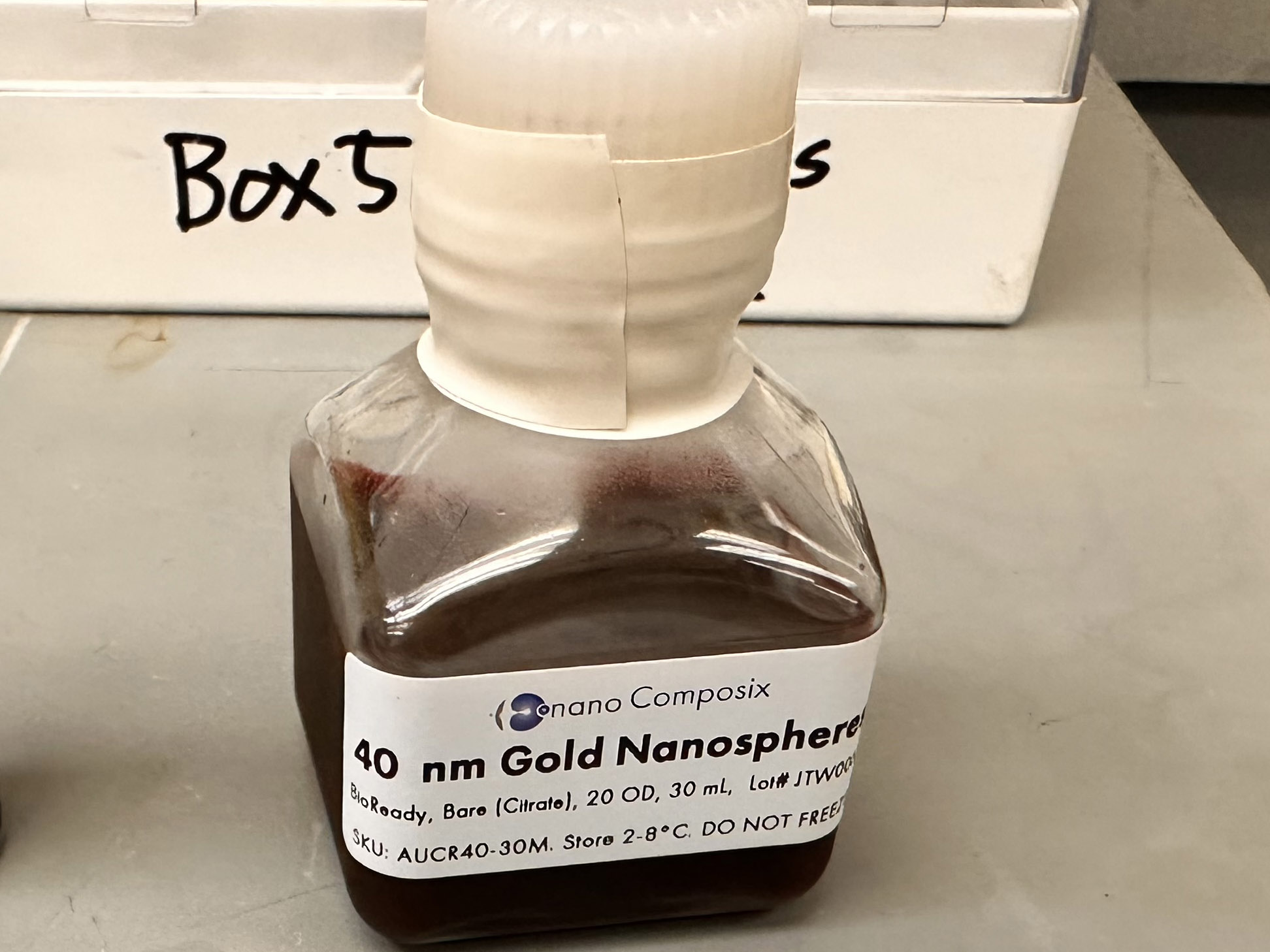
A container of colloidal gold nanoparticles utilized in the lateral flow assay research.
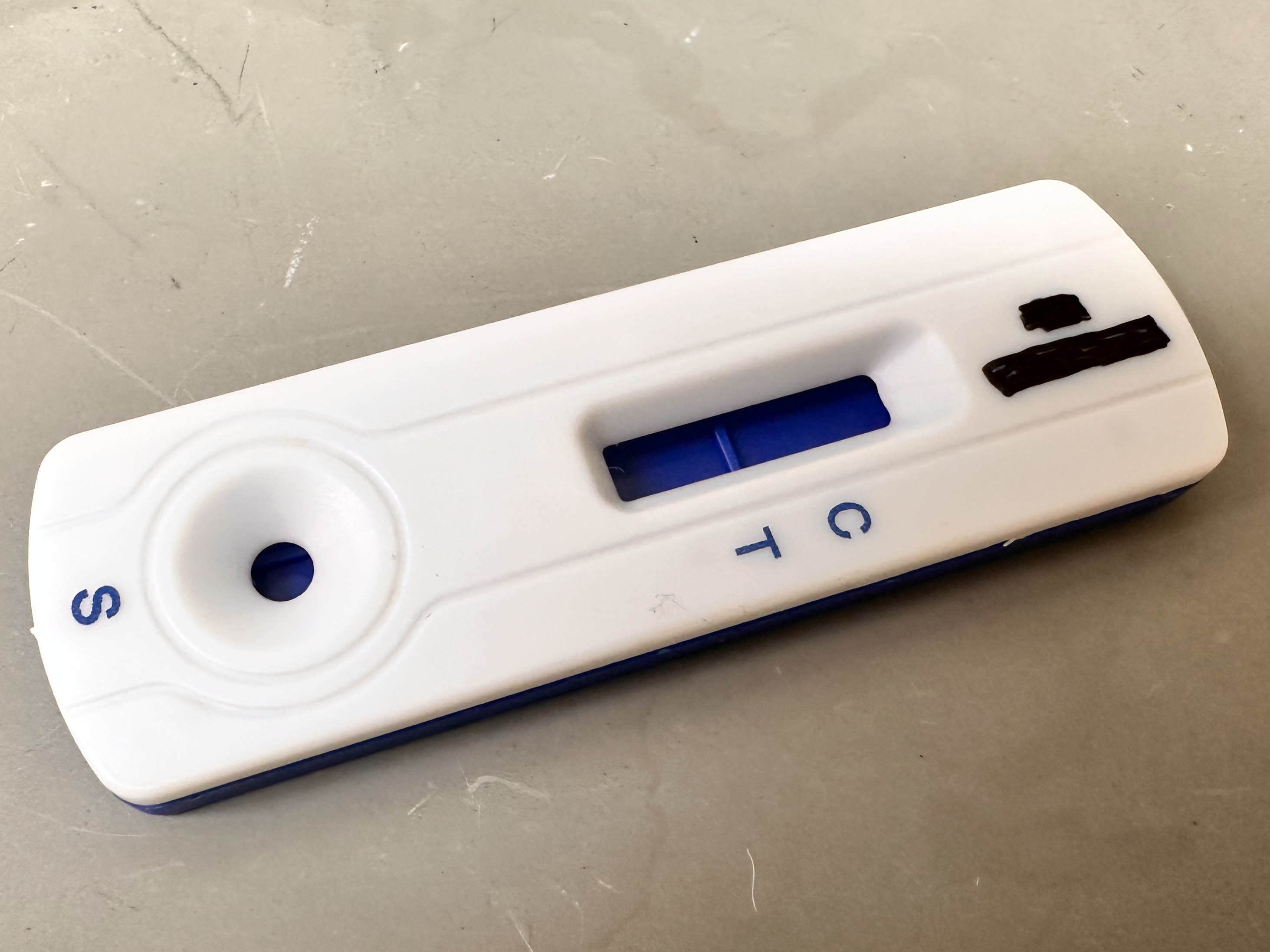
A blank lateral flow assay test in the laboratory at OHIO's Edison Biotechnology Institute.
OHIO collaboration
Proving that less expensive materials could perform comparably with gold in LFA tests was no small task and required collaboration between Ohio University researchers in several fields as well as other institutions throughout the world. Physicists, biologists, chemists, engineers, computer scientists and more worked together to investigate using titanium nitride and gold-covered copper in tests kits.
“This project had a long history and was a collaborative work between four groups at Ohio Univesity, two U.S. national labs, and three international collaborators,” said Govorov.
Dr. Govorov’s colleagues in physics (opens in a new window), including Ohio University professor Dr. Martin Kordesch, supported the research with lab space and the transmission electron microscopy of nanomaterials. Three Ph.D. students from Govorov’s group, Eva Yazmin Santiago Santos, Ridwan Hussein, and Richard Sottie, assisted in computational simulations of nanocrystals of different shapes, helping the team understand the optical responses of nanomaterials. Santiago Santos was also responsible for the initial modeling showing the promise of using TiN in test kits.
The biofunctionalization and biotesting of the target biomarkers were executed mainly by Bahamondes Lorca and Avalos Ovando. Avalos Ovando also contributed optical characterization of the nanoparticles of interest with Associate Chemistry (opens in a new window) Professor Dr. Katherine Cimatu and Biochemistry Ph.D. student Eli Skelton. This research pushed the scientists beyond their usual concentrations but allowed them to holistically prove their hypothesis.
“[Veronica and I] actually don’t work in biotesting. I do mostly simulations of electromagnetic properties in nanoparticles, and Veronica does mostly photobiology,” said Avalos Ovando. “Biotesting was something where we met in the middle but was out of our everyday reach.”
Some aspects of research were even analyzed by artificial intelligence. Determining whether a test is positive can be an interpretive process, one person may see faint red lines, whereas another may not. To ensure there was no bias, researchers turned to Professor Jundong Liu and Dr. Zhewei Wang from the School of Electrical Engineering and Computer Science (opens in a new window) who performed machine learning readout and recognition of the concentration of the target proteins on the biofunctionalized strips.
“It was a collaboration from many parts of Ohio University,” said Bahamondes Lorca. “That is why we have all this collaboration, we need to be sure that what we are seeing is true and useful, so it needs to be analyzed in different ways.”
Collaboration also extended internationally. The nanoparticles used by the team were special, coming from two international groups from University Marcelle in France and the Energy Institute in Montreal, Canada. Dr. Christoph Sikeler from Ludwig Maximilians University in Germany, Professor Dongling Ma from Institut National de la Recherche Scientifique in Canada, and Professor Andrei V. Kabashin from Aix-Marseille University in France were key international collaborators. Likewise, critical domestic contributions were necessary from Dr. Olga Baturina of the United States Naval Research Laboratory in Washington and Dr. Joseph M. Slocik of the Air Force Research Laboratory at Wright Patterson Air Force Base.
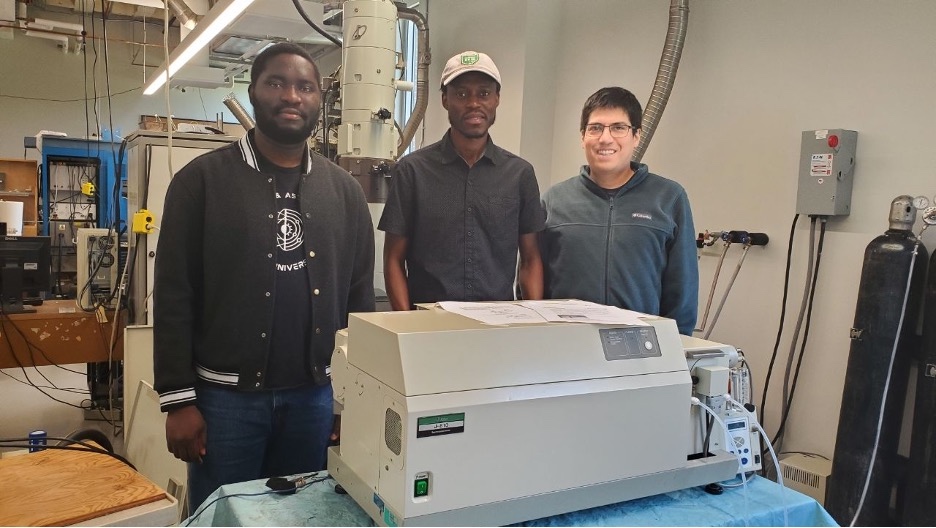
Richard Sottie, Ridwan Hussein and Oscar Avalos Avando in a physics laboratory with a new CD spectrometer.

OHIO researcher Eva Yazmin Santiago Santos was one of many contributors to the biotesting discovery.
Expanding biotesting research
Lateral Flow Assay technology is mainly associated with testing for COVID but has many other applications. LFA tests are used in blood tests, pregnancy tests, urine tests, detecting a wide range of illnesses, and even detecting heart attacks. A portion of the research at Ohio University focused on testing for troponin, a protein released during a heart attack. Replacing gold to make tests cheaper, means more people could potentially test for life-threatening conditions.
“If you were able to produce a large amount of these tests for several diseases this would allow you to deliver tests to people for free or at a low cost,” said Avalos Ovando. “Imagine if everybody had a test at their home for checking a heart attack. If you start feeling pain in your arm or chest you can test it to avoid any delays in seeking medical attention at the emergency room.”
The gold used in tests is not only expensive, but also scarce. Production of gold has recently flat-lined and decreased production would only further increase the cost of testing. With other metals proven to be equally as effective tests won’t necessarily have to rely on gold.
“The other way of seeing it is if the production of gold starts decreasing, we can have a backup of something else that can work,” said Bahamondes Lorca. “So, if the tests are necessary, we will not be without the main component.”
The results of the biotesting research are currently published in the scientific journals Nano Letters (opens in a new window) and BioRxiv (opens in a new window) for scientists to view, cite and reproduce. The OHIO researchers hope that making the results available to the scientific community will lead to even more biotesting breakthroughs.
Funding for this LFA research came from a variety of sources. A portion was funded by the Ohio University Research Committee/Baker Fund (opens in a new window) which provides seed money for faculty and staff to pursue research and creative activity projects. Ohio University’s Nanoscale & Quantum Phenomena Institute (opens in a new window), Department of Physics and other OHIO research institutes also funded this research.

